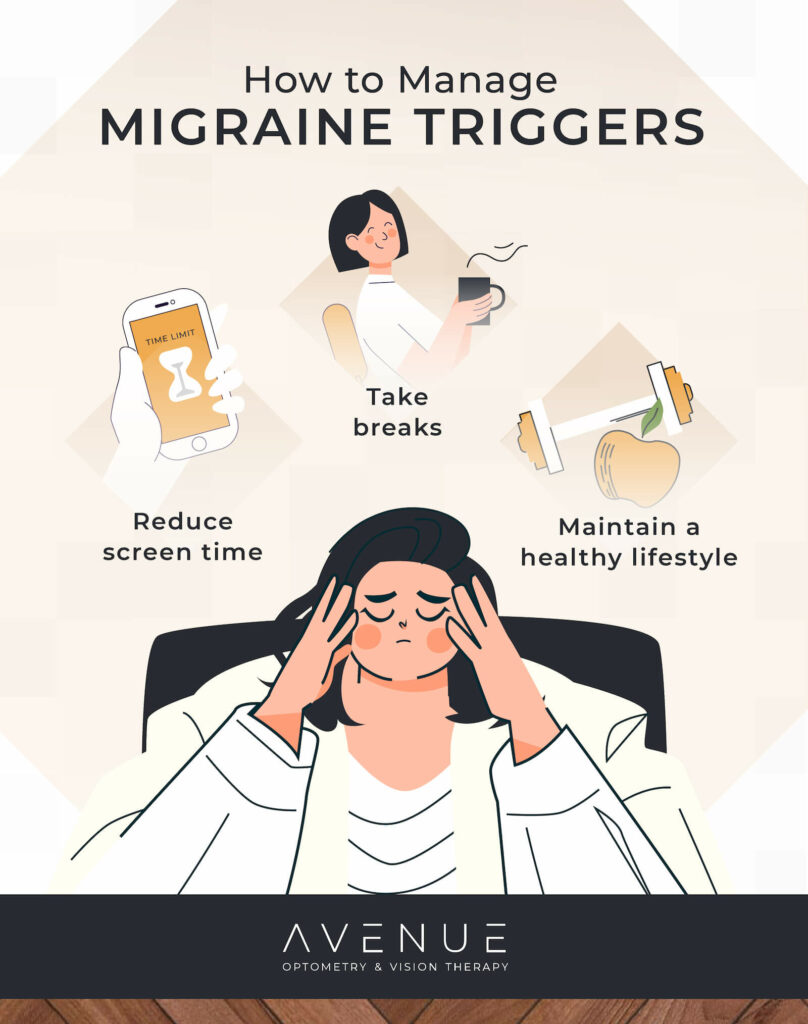Although migraines and headaches can be caused by various factors, the connection with your vision cannot be understated. Amblyopia is a condition where 1 eye is weaker and the other must overcompensate to make up for it, and it can make some people more likely to have migraines and headaches. The connection between amblyopia and headaches is thought to come from the strain that amblyopia can put on your eye muscles.
At Avenue Optometry & Vision Therapy, we offer vision therapy and personalized treatments to help adults and children manage the effects of amblyopia and strengthen their vision.
What Is Amblyopia?
Amblyopia, which is often called lazy eye, is a vision development disorder in which 1 eye has reduced vision compared to the other, even when a person wears glasses or contact lenses. It occurs when the brain favours 1 eye, resulting in reduced binocular vision and depth perception. Amblyopia is considered one of the most common eye problems in children.
What Is the Difference Between Amblyopia & Strabismus?
Amblyopia and strabismus are distinct conditions. They share some connections, but they also have their own unique differences.
Amblyopia involves poor vision in 1 eye due to abnormal visual development.
Strabismus refers to the misalignment of the eyes, causing them to look in different directions.
Strabismus can lead to amblyopia, but not all cases of amblyopia result from strabismus.
Can Eye Problems Cause Migraines & Headaches?
Yes, in some cases, eye problems can trigger migraines and headaches. The eye conditions often associated with headaches include:
- Eye strain from prolonged screen time or reading.
- Misalignment of the eyes—such as the misalignment experienced with amblyopia—causing increased effort to focus.
- Uncorrected vision problems leading to overuse of the eye muscles, including conditions like myopia (nearsightedness) and presbyopia, which causes blurry vision up close and often affects adults over 40.
It’s important to know that not all headaches are caused by eye problems, and severe headaches that occur alongside other eye issues, such as droopy eyelids or double vision, could be a sign of a serious condition like a stroke.

How Do I Know If a Headache Is from My Eye Problems?
Identifying whether your or your child’s headaches are related to eye problems can involve considering the following factors:
- Location: Eye-related headaches often occur around or behind the eyes.
- Timing: Headaches that worsen after prolonged visual tasks may be associated with unaddressed vision issues.
- Associated Symptoms: Blurred vision, double vision, or difficulty focusing can accompany eye-related headaches.
We can help you determine whether or not the underlying causes of headaches are related to an unaddressed eye condition.
What Is the Difference Between a Headache & a Migraine?
Although headaches and migraines are similar, there are some important factors that distinguish them from each other.
In general, a headache causes head or upper neck pain and can be caused by various factors, while a migraine is a more severe neurological condition characterized by intense, throbbing pain, often accompanied by nausea, vomiting, and sensitivity to light and sound.
The Role of Vision Therapy
Vision therapy is a possible solution for addressing amblyopia and potentially alleviating headaches to enhance your quality of life or your child’s quality of life. Vision therapy targets the underlying visual issues associated with amblyopia and can also contribute to enhanced overall visual function and comfort.
With a personalized vision therapy plan, amblyopia can be improved with exercises that help strengthen visual acuity, improve eye coordination, and reduce eye strain. In some cases, these vision therapy exercises can help minimize headaches when they are caused by amblyopia.

What Avenue Optometry & Vision Therapy Can Do for You
If you suspect your or your child’s migraines are related to amblyopia, we recommend the following:
- Consult an optometrist for a comprehensive eye exam.
- Follow treatment plans recommended by your optometrist, such as wearing prescribed glasses, using eye patches, or starting vision therapy.
- Manage migraine triggers by reducing screen time, taking breaks during visual tasks, and maintaining a healthy lifestyle.
Understanding the relationship between amblyopia and migraines can help you manage symptoms effectively and improve your quality of life. We are here to help you and your family maintain your visual comfort and your well-being. For personalized advice and treatment, book an appointment with our family-centered eye team. We would be happy to discuss your symptoms and help you find a solution.




